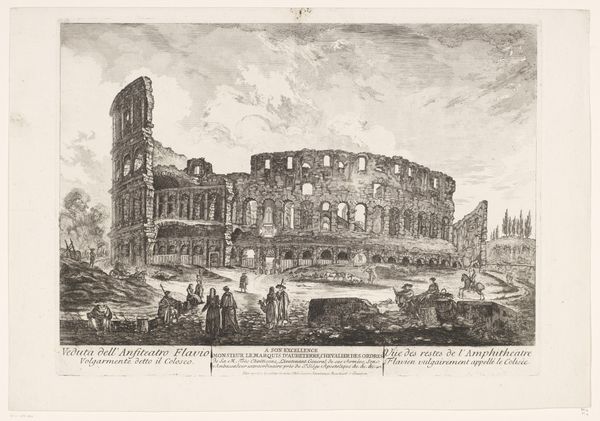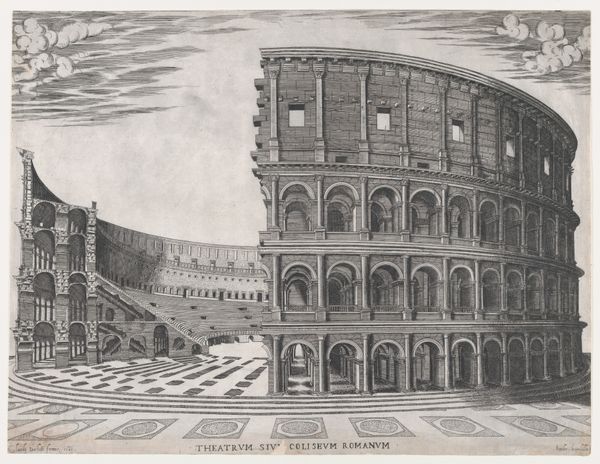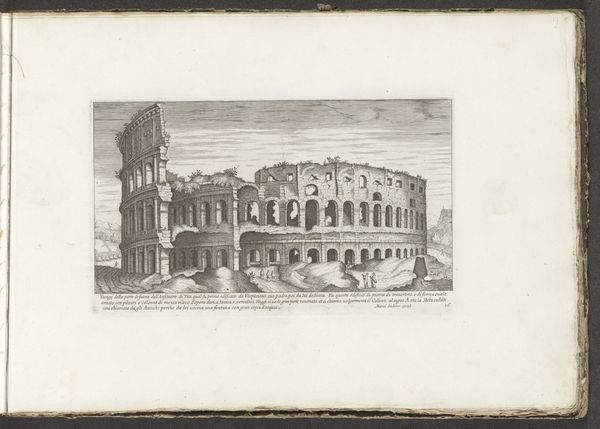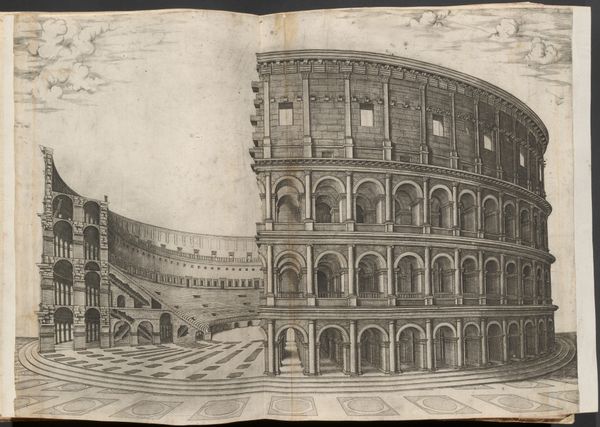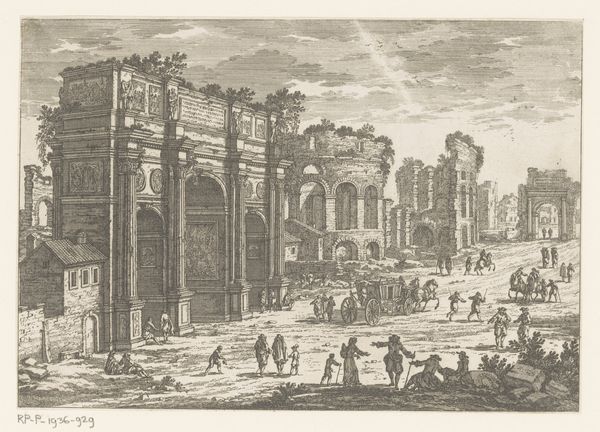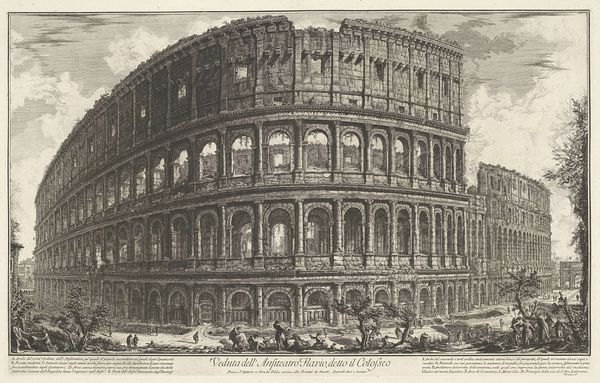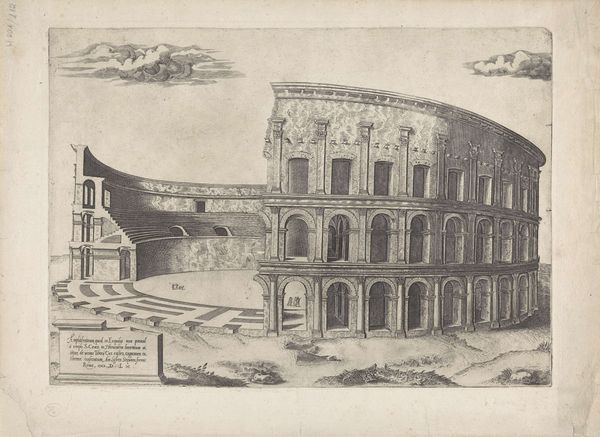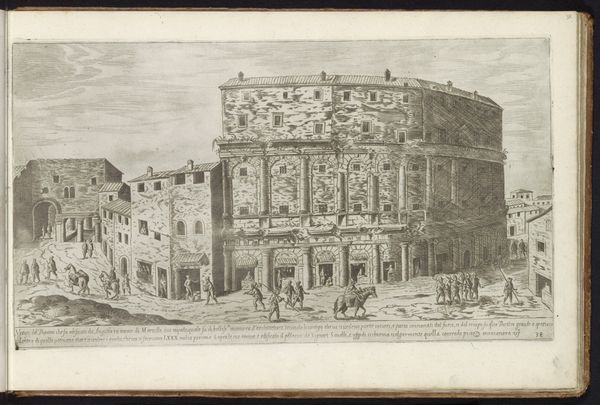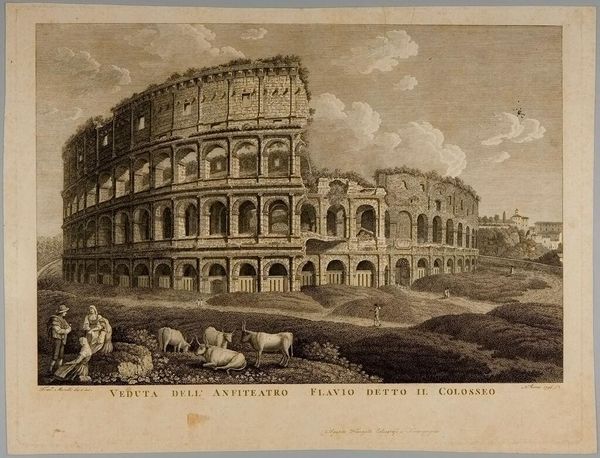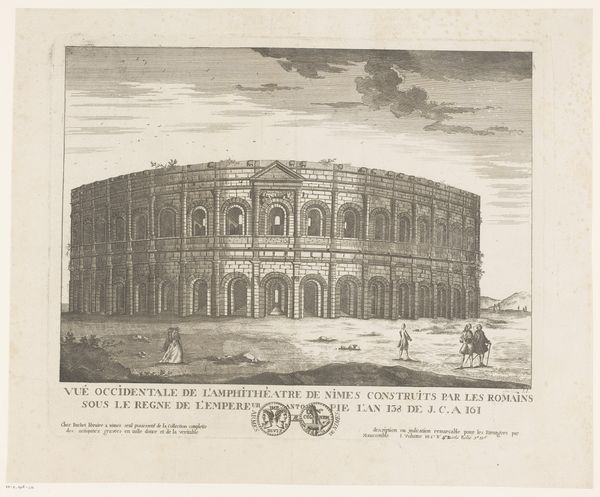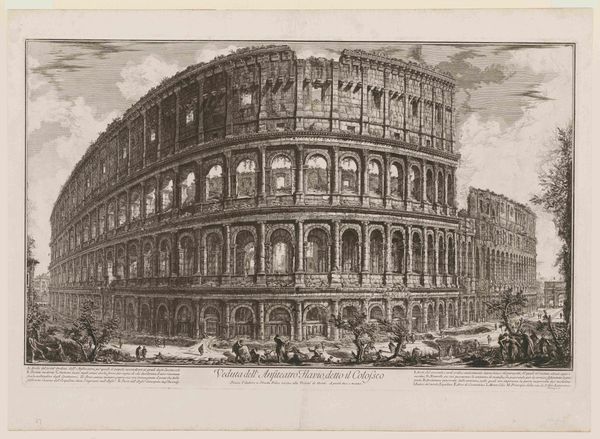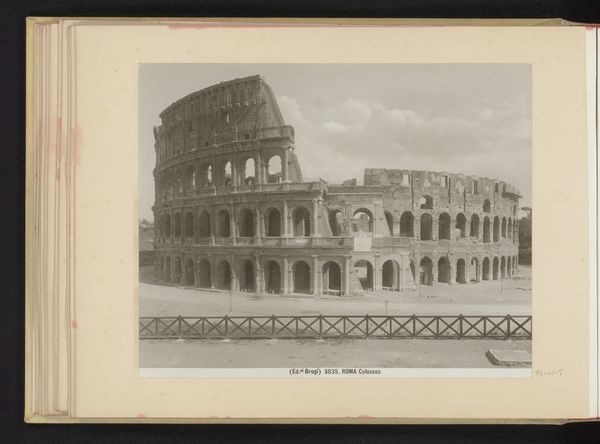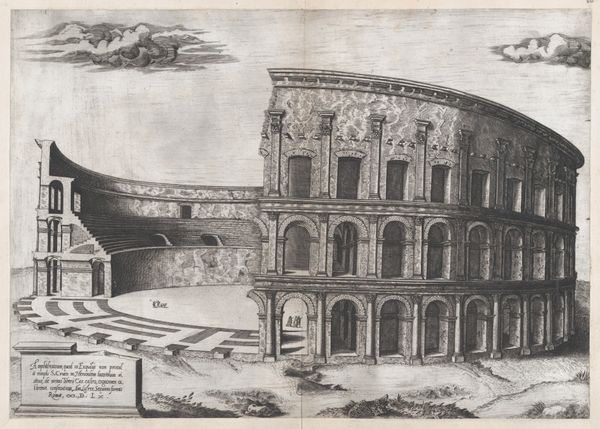
drawing, print, ink, engraving
#
drawing
#
ink drawing
#
pen drawing
# print
#
landscape
#
ink
#
ancient-mediterranean
#
cityscape
#
history-painting
#
italian-renaissance
#
engraving
Dimensions: height 215 mm, width 381 mm
Copyright: Rijks Museum: Open Domain
Curator: Standing before us is “Colosseum te Rome,” a 1575 engraving by Étienne Dupérac, housed right here at the Rijksmuseum. Editor: The crumbling stonework hits me first. There’s something terribly romantic about ruins, all that decay speaking volumes about the impermanence of power. Curator: Indeed. Dupérac’s mastery of line brings to life both the grandeur of what was, and the slow creep of time. We see the Colosseum, not in its triumphal glory, but overtaken by nature, its stones worn. Think of the labour required, each carved stone. What narratives did each of the nameless artisans hold? Editor: That emphasis on craft makes perfect sense when considering that printmaking allowed for dissemination of such images, essentially democratizing access to the architectural wonders, even in fragmented forms. You know, it looks strangely inviting. Despite the broken arches, there's a path leading in. Are we meant to see ourselves wandering those ruins? Curator: Perhaps. Dupérac’s work often presents such contrasts, that tension between the awe-inspiring monument and the immediate human experience. We imagine gladiatorial combat but are grounded by the creeping flora. The city becomes its own palimpsest. A site and resite. Editor: Absolutely, I'm considering the consumption of imagery, its use to influence grand tour circuits for elite Europeans hungry for classical validation through artistic form, like printed versions that became souvenirs of antiquity's material culture… or a meditation on the power that fades. The Colosseum’s ruins are essentially the remains of class power, stripped bare. And now? A destination for tourism, with other markets layered in. Curator: Right. He gives us both a cityscape, capturing a specific locale, and a history painting of sorts, suggesting reflections on human history and Rome’s symbolic significance in 1575. One finds a different story based on which aspect you favor. Editor: I leave feeling very somber. A black and white drawing offers such an atmosphere of layered time periods; perhaps, it allows a connection to both the height and destruction of past empire-building while anticipating future downfalls in equal measure. A lot to ponder! Curator: Precisely, the power of a seemingly simple line drawing – Dupérac hands us a ruin, a fragment, and asks, What does one rebuild of the remains?
Comments
No comments
Be the first to comment and join the conversation on the ultimate creative platform.
